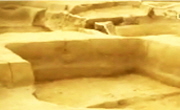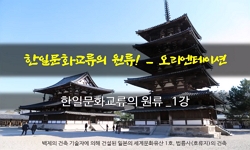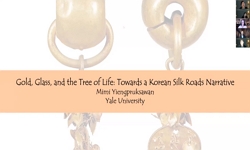본고에서는 익산을 중심으로 한 전북지역 세력이 무왕대 전개되는 對신라전쟁에서 백제가 우위를 점할 수 있게 되는 중요한 세력기반이 되었다고 보았다. 이를 밝히기 위해 백제사 전반에...
http://chineseinput.net/에서 pinyin(병음)방식으로 중국어를 변환할 수 있습니다.
변환된 중국어를 복사하여 사용하시면 됩니다.
- 中文 을 입력하시려면 zhongwen을 입력하시고 space를누르시면됩니다.
- 北京 을 입력하시려면 beijing을 입력하시고 space를 누르시면 됩니다.
익산지역의 백제편입과정과 무왕의 세력기반 = (The) admittance of the Iksan region into Baekje and king Moo's foundation of influence
한글로보기https://www.riss.kr/link?id=T11271527
- 저자
-
발행사항
부천 : 가톨릭대학교 대학원, 2007
-
학위논문사항
학위논문(석사) -- 가톨릭대학교 대학원 , 국사학과 한국고대사 전공 , 2007. 8
-
발행연도
2007
-
작성언어
한국어
- 주제어
-
DDC
951.9033 판사항(21)
-
발행국(도시)
경기도
-
형태사항
47 p. : 삽도 ; 26 cm
-
일반주기명
국,영문초록 포함
지도교수: 이순근
부록: 주요고분 일람표 외.
참고문헌(p. 37-39) 포함 - 소장기관
-
0
상세조회 -
0
다운로드
부가정보
국문 초록 (Abstract)
본고에서는 익산을 중심으로 한 전북지역 세력이 무왕대 전개되는 對신라전쟁에서 백제가 우위를 점할 수 있게 되는 중요한 세력기반이 되었다고 보았다. 이를 밝히기 위해 백제사 전반에서 이들 세력이 백제에 편입되어 가는 과정과 이들 세력을 기반으로 무왕이 국력 통합을 이루는 배경을 설명하고자 하였다.
익산지역을 중심으로 한 전북지역 세력이 본격적으로 백제에 편입된 시기는 5세기 중반 이후였다. 4세기 후반~5세기 중반까지 이 지역에서는 지방 토착묘제인 수혈식석곽묘가 주로 조영되었으나 5세기 중반 이 후 익산지역에서 석곽묘에서 횡혈식석실묘로 가는 과정에서 과도기적 형태인 ‘횡구식석실묘(과도기형묘제)’가 새롭게 조영되면서 이 지역에서 백제의 영향력이 커지고 있음을 알 수 있다. 그러나 담로제를 통해서 알 수 있듯이 이 지역에 대한 백제의 직접지배가 이루어지지는 않았던 것으로 생각한다.
전북지역에 대한 직접지배가 이루어진 시기는 백제가 웅진으로 천도한 이 후인 동성왕대 이후였을 것으로 생각한다. 그리고 전북지역이 백제의 직접지배영역으로 편입되어지는 시기에 전북지역의 대표세력이라고 할 수 있는 익산은 점차 백제의 중앙세력으로 편입되고 있다. 이는 익산의 대표적인 유적인 입점리 1호분에서 발견된 다양한 부장유물은 백제가 익산지역세력에게 사여한 위신재로 백제는 익산지역이 백제와 보다 밀접한 관계를 맺고 있었음을 보여주는 것이다. 백제는 익산지역을 중심으로 보다 효율적으로 전북지역을 직접지배권으로 편입시키고자 한 것이었다.
또한 익산세력이 백제의 중앙세력으로 편입된 것과 관련하여 주목되는 것으로 부여 능산리사지에서 출토된 六阝五方銘 목간이 있다. 백제 도성에서 행해진 部制는 중국의 條坊制와 마찬가지로 지배세력에 대한 회유나 통제를 기본 목적으로 하고 있었다. 이런 목적을 가진 部가 5部에서 6部로 재편되었다는 것은 곧 새로운 세력의 등장을 뜻하는 것으로 추정할 수 있다. 이 때 새롭게 등장한 세력은 익산세력을 중심으로 한 전북지역의 유력한 세력들이었을 가능성이 크다. 백제는 이들을 도성내로 편입시켜 중앙세력화 함으로써 익산을 중심으로 한 전북지역과의 결합을 더욱 돈독히 하고자 하였던 것으로 추정된다. 백제가 이렇게 익산지역을 중심으로 전북지역을 확보하고자 한 것은 삼년산성-관산성-아막산성으로 이어지는 신라와의 접경이 형성되는 한편 562년 대가야가 멸망하면서 급격히 증가한 신라의 西進 압박에 대응하기 위한 것으로 이해할 수 있다.
백제와 신라사이의 긴장관계가 더해짐에 따라 전북지역에 대한 중요성이 커지면서 이를 대표하는 익산세력의 중요성도 점점 커졌을 것이다. 이 때문에 백제는 한단계 더 나아가 익산세력을 왕실세력으로 편입시키게 되었고, 이는 무왕의 어머니와 법왕과의 혼인을 통한 결합이라는 형태로 나타났다. 한편 위덕왕이 왕권을 안정시키기 위해 노력하는 과정에서 등장한 혜왕은 왜나 법왕의 결혼을 통해 맺어진 익산세력과의 관계를 토대로 정치적 기반을 마련하였고 이를 바탕으로 왕위에 오른 것으로 보인다. 이 후 혜왕-법왕-무왕으로 이어지는 왕위계승관계가 형성되면서 익산세력을 중심으로 한 전북지역 세력은 무왕의 중요한 세력기반이 되었을 것이다.
무왕은 즉위 초부터 對신라 강경책을 취하고 있는데 이는 익산을 중심으로 한 전북지역세력과의 관계가 중요한 역할을 하였다. 익산세력은 단순히 무왕의 세력기반이라는 의미를 넘어 전북지역 세력의 결집을 위한 중추역할을 하면서 무왕대 벌어지는 신라와의 전쟁에서 백제가 우위를 점할 수 있는데 결정적인 역할을 하고 있다. 이는 익산 미륵사와 왕궁리유적 등을 통해 알 수 있다. 무왕은 익산지역에 미륵사라는 거대한 사찰을 세우고 탑을 조성함으로써 이를 중심으로 주변지역의 지방세력들을 하나로 결집할 수 있었다. 또한 이 지역에 일종의 離宮을 지음으로써 익산지역의 중요성을 부각시켰던 것으로 보인다. 한편 무왕은 재위 말기에 사비도성 인근에 왕흥사를 세우고 있다. 미륵사의 창건이 익산을 기반으로 한 지방세력의 통합이라는 의미가 있다면, 왕흥사의 창건은 중앙 및 지방의 모든 힘을 하나로 결집시켰다는 의미를 가진다. 미륵사의 창건과 왕흥사의 창건을 통해 무왕은 명실상부한 국력의 통합과 왕권의 회복을 이루어낸 것이라고 할 수 있다. 이러한 국력 통합의 힘이 무왕대 벌였던 對신라전쟁에서 백제가 우위를 점할 수 있는 기반이 되었다.
다국어 초록 (Multilingual Abstract)
The following paper argues that the influence of Iksan and its surrounding regions played a strong role in Baekje’s victory over Shilla under King Moo. In order to prove this point, the paper will detail the process in which the region’s influence...
The following paper argues that the influence of Iksan and its surrounding regions played a strong role in Baekje’s victory over Shilla under King Moo. In order to prove this point, the paper will detail the process in which the region’s influence slowly made its way into Baekje in addition to explaining the process in which King Moo unified the nation states.
The Iksan region and its surrounding area began to incorporate themselves into Baekje during the second half of the 5th century. From the 4th to mid 5th century, traditionally tombs native to this region were built in the shape of square chest tombs, however, during the later half of the 5th century, one begins to see the stylistic transition from Square Chest Tombs to Horizontal digging Stone Chamber Tombs. During the transitional period came the spectacular Horizontal Entrance Style Stone Chamber Tomb, revealing the amount of Baekje influence that had already made its way into the Iksan region. However, judging from the administrative districts in this area, most experts believe that Baekje did not have direct rule or influence over this area.
The period in which Baekje actually exercised direct control over the land is most likely to have been after the transfer of the capital to Woong-Jin, in other words, after the reign of King Dongseong. Moreover, during this period of admittance under the Baekje power, Iksan slowly began to establish itself as the central power of Baekje. Pitt one of Iksan’s main excavation site, Ip-Jum-ri, unearthed various funeral relics which reveals the authority granted to the Iksan region by Baekje, showing the close relationship the two shared. With the Iksan region as the centre, Baekje hoped to extend its direct rule over the entire region in the most efficient way.
Furthermore, the excavation of the 六阝五方銘 bathing place in ‘Neung-san-ri-sa-ji’ area of Buyoreveals much more about the admittance of Iksan into Baekje’s rule.
In the capital city of Baekje, they practiced the Bu system, which similar to that of the Chinese Choban, revolved around pacification and regulation as its main object. With such an object, the reorganization of this system from 5 部 to 6 部, reveals the emergence of a newly formed power. The chances that the emerging authority was a group of strong main powers who ruled over the surround area of Iksan are quite high. One can deduce that Baekje’s incorporation of these powers into the capital city, thereby centralizing them was a way to solidify and strengthen unity of the entire area. One reason for Baekje’s attempts at unifying the regions surround the Iksan region may have been to fortify itself against the great powers of Shilla, which not only included the ‘Sam-nyun,’ ‘Kwan-san’, and ‘ah-mak’ mountain fortress walls, but also had grown stronger after the fall of Daegaya in the year 562.
As tension arose between Baekje and Shilla, more importance began to be placed on the control of the entire country’s region, and as a result the significance of Iksan region would also have increased. Because of this, Baekje went a step further to incorporate the Iksan power into the Royal household, and took form in the marriage of King Moo’s mother to King Bub. Consequently, while King Weduck’s attempted to stabilize the royal authority, there emerged King Hye who by using the marriage of King Bub laid governmental foundations in order to ascend to the throne. His reign was followed by King Hye, King Bub, and King Moo, thereby establishing the system of succession. Furthermore, Iksan and its surrounding region would have been a strong foundation for King Moo once he came to throne.
Upon accession to the throne, King Moo enforced a hard-line-policy against Shilla, and played a pivotal role in the region including Iksan. Going beyond the fact that it was the basis of foundation of King Moo’s power, the Iksan authority acted as an important piece in concentrating and unifying the powers, thereby giving Baekje the upper-hand in the war between Baekje and Shilla. One can confirm this information from relics unearthed in areas such as ‘Mi-ruk-sa’ and the palaces in Iksan. King Moo built an enormous Buddhist temple and pagodas in Iksan in order to use this area as the main centre as a way of unifying the surrounding region’s powers. He also built in this region a Palace for the Crown Prince, underscoring the importance of the Iksan area. King Moo also constructed ‘Wang-Heung-Sa’ toward the end of his reign in the area of Ingun ‘Sa-Bi-Do.’ If the establishment of such buildings was meant for centralizing the region, then ‘Wang-Heung-Sa’ was meant to unify and centralize all the powers in the Iksan region. Through the building of such architecture, King Moo firmly symbolized the unification of the national powers and reaffirmed the sovereignty of the King. One can see that the highly efficient centralization gave Baekje victory over Shilla during the war with Shilla
목차 (Table of Contents)
- 목 차
- 머리말 1
- 1. 武王代 이전 익산지역 2
- 목 차
- 머리말 1
- 1. 武王代 이전 익산지역 2
- 1) 익산지역의 백제 세력권화 3
- 2) 익산지역의 中央勢力化 9
- 2. 무왕과 익산세력 16
- 1) 무왕계의 등장과 세력기반 17
- 2) 무왕의 권력강화와 익산지역 24
- 맺음말 34
- 참고문헌 37
- 부록 1 주요고분 일람표 40
- 부록 2 횡구식석실묘(과도기형 묘제) 일람표 45
- 부록 3 횡구식석실묘(과도기형 묘제) 추정고분 46
- ABSTRACT












